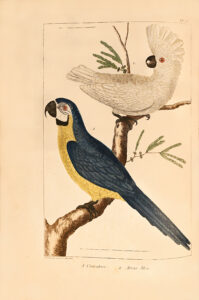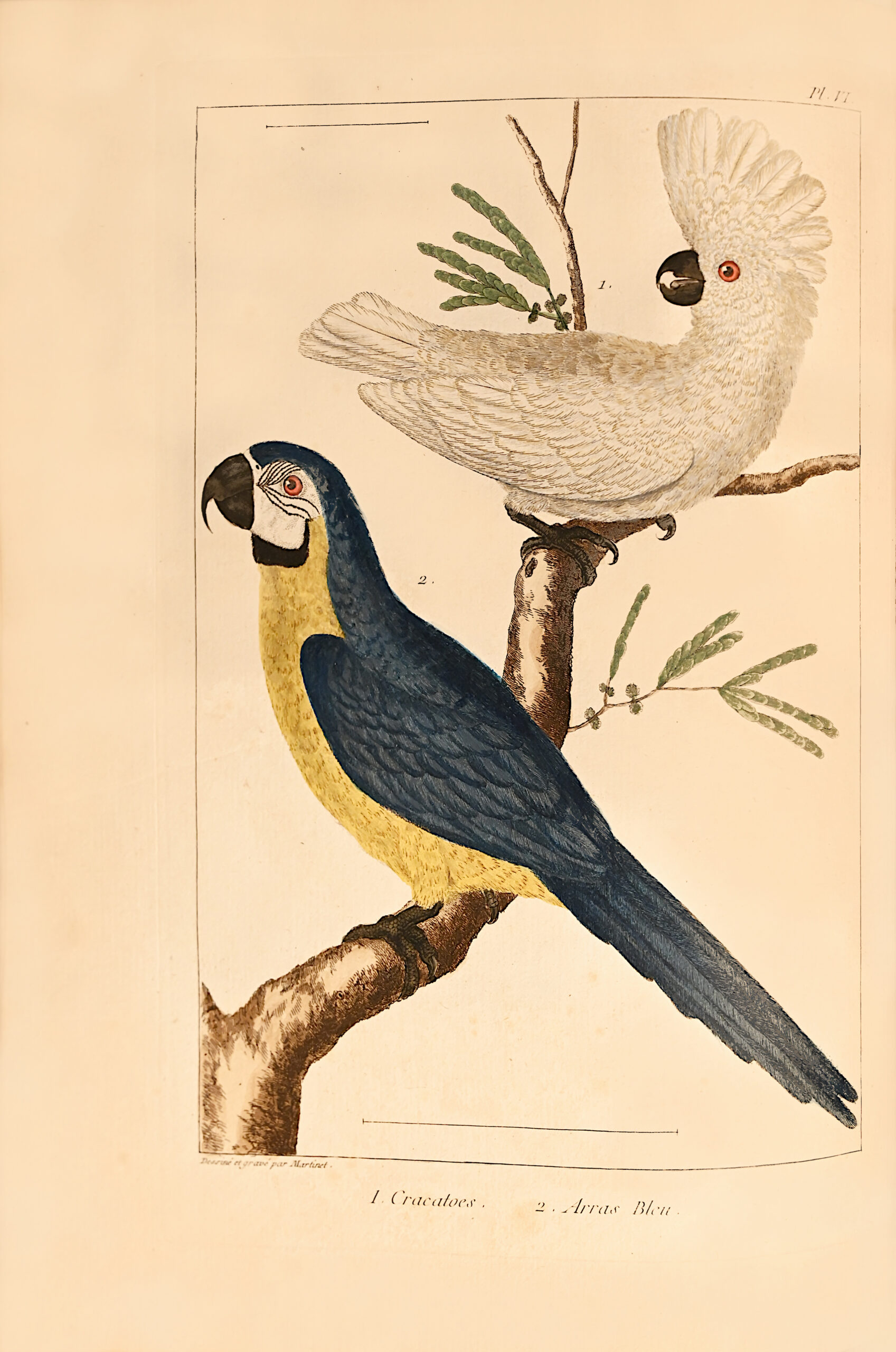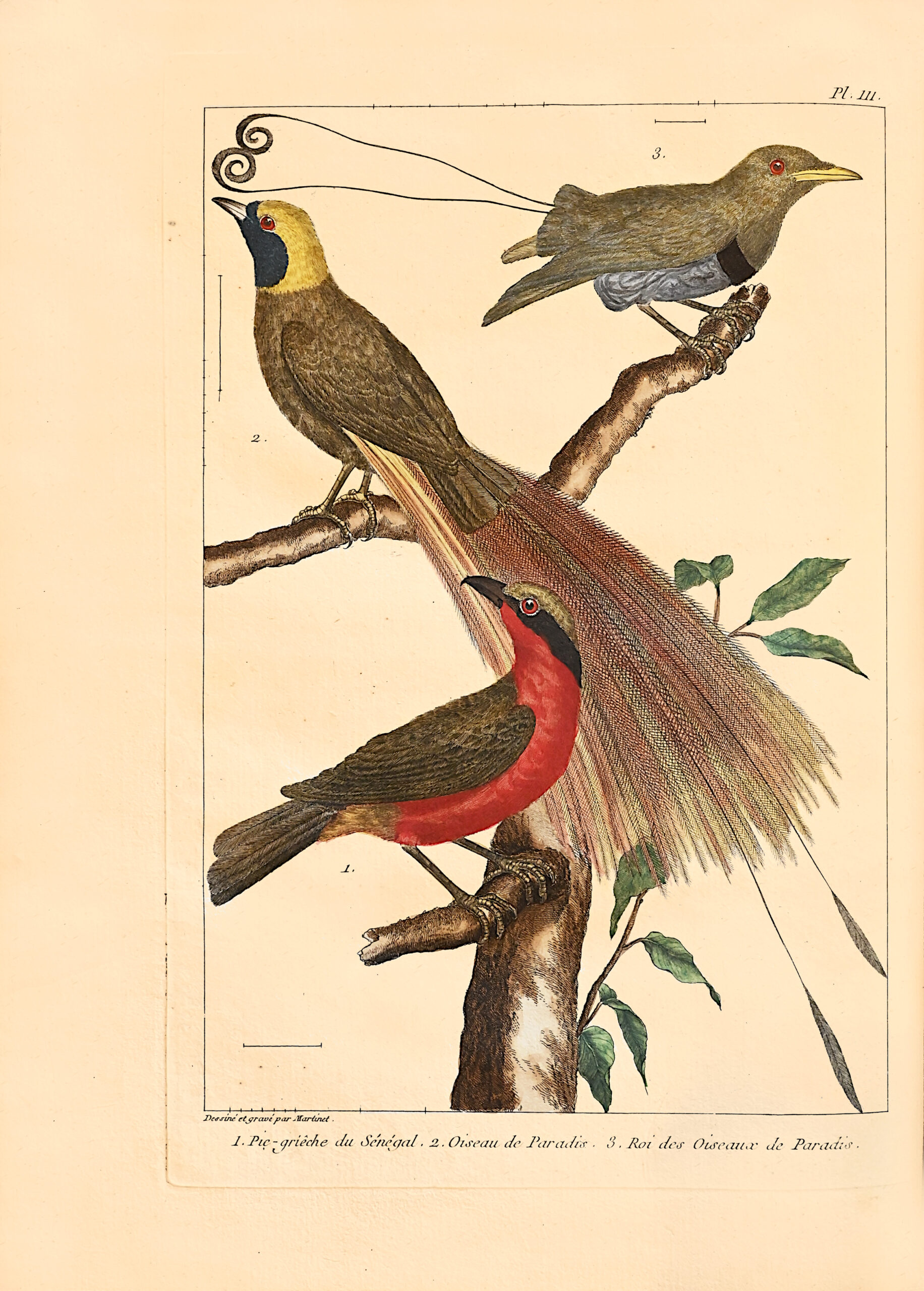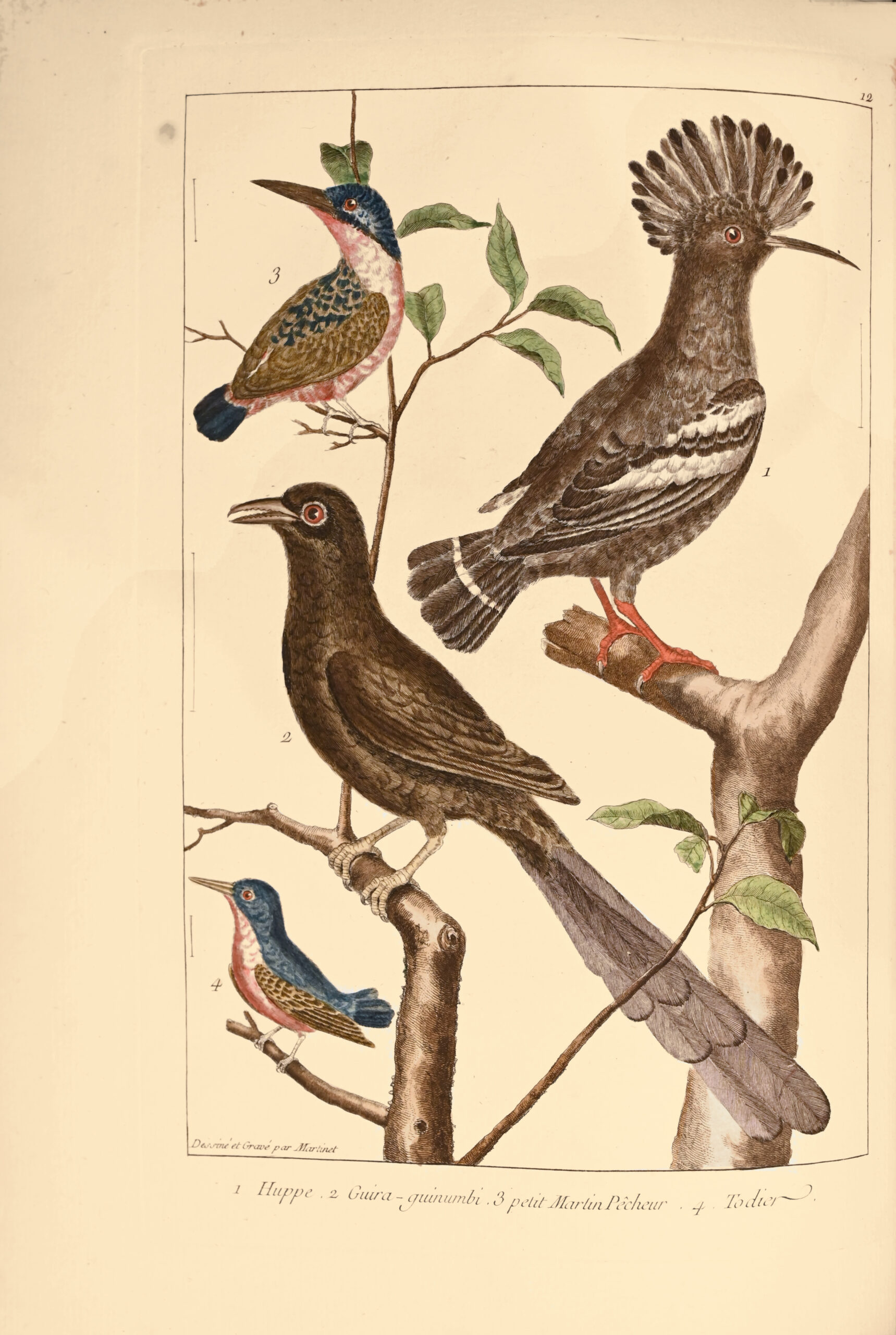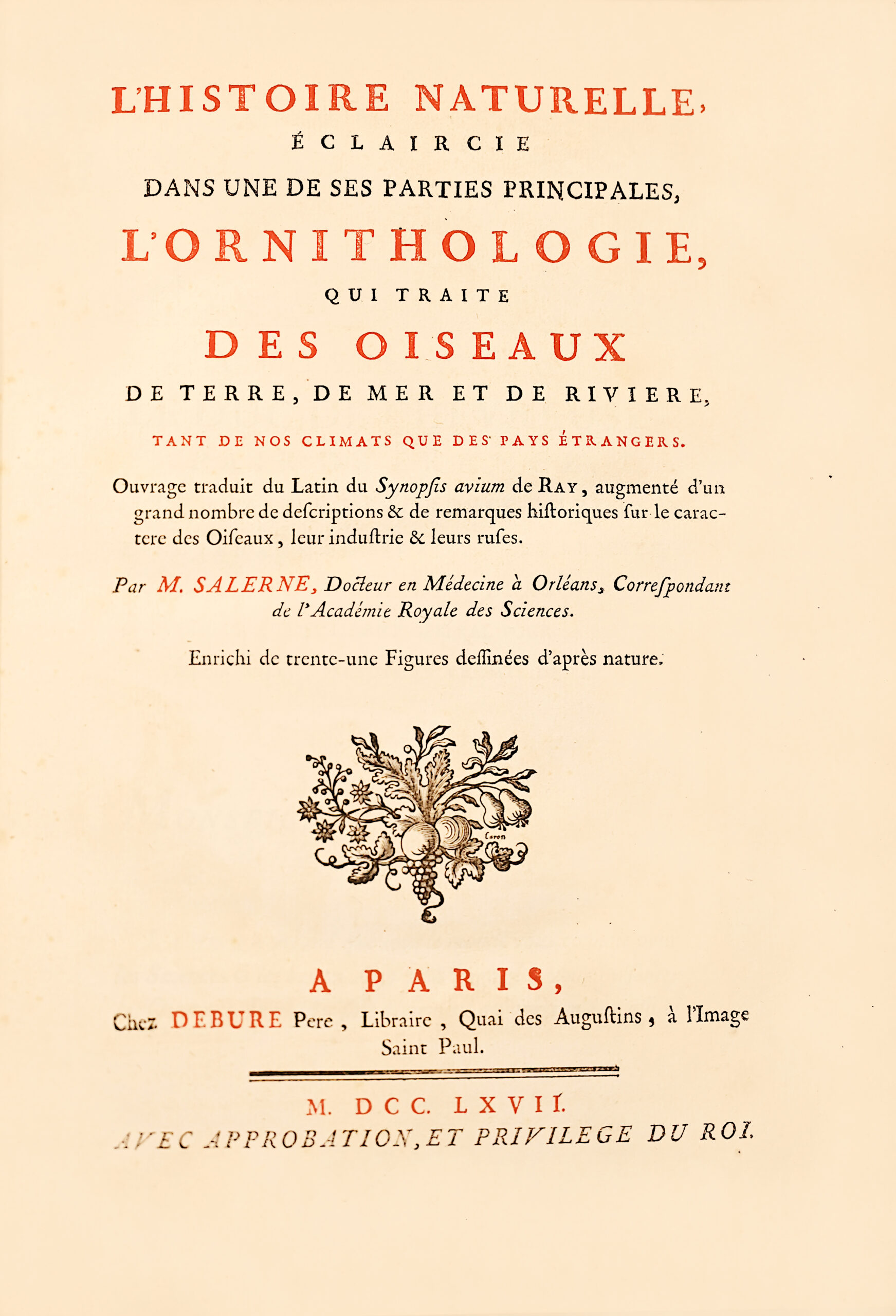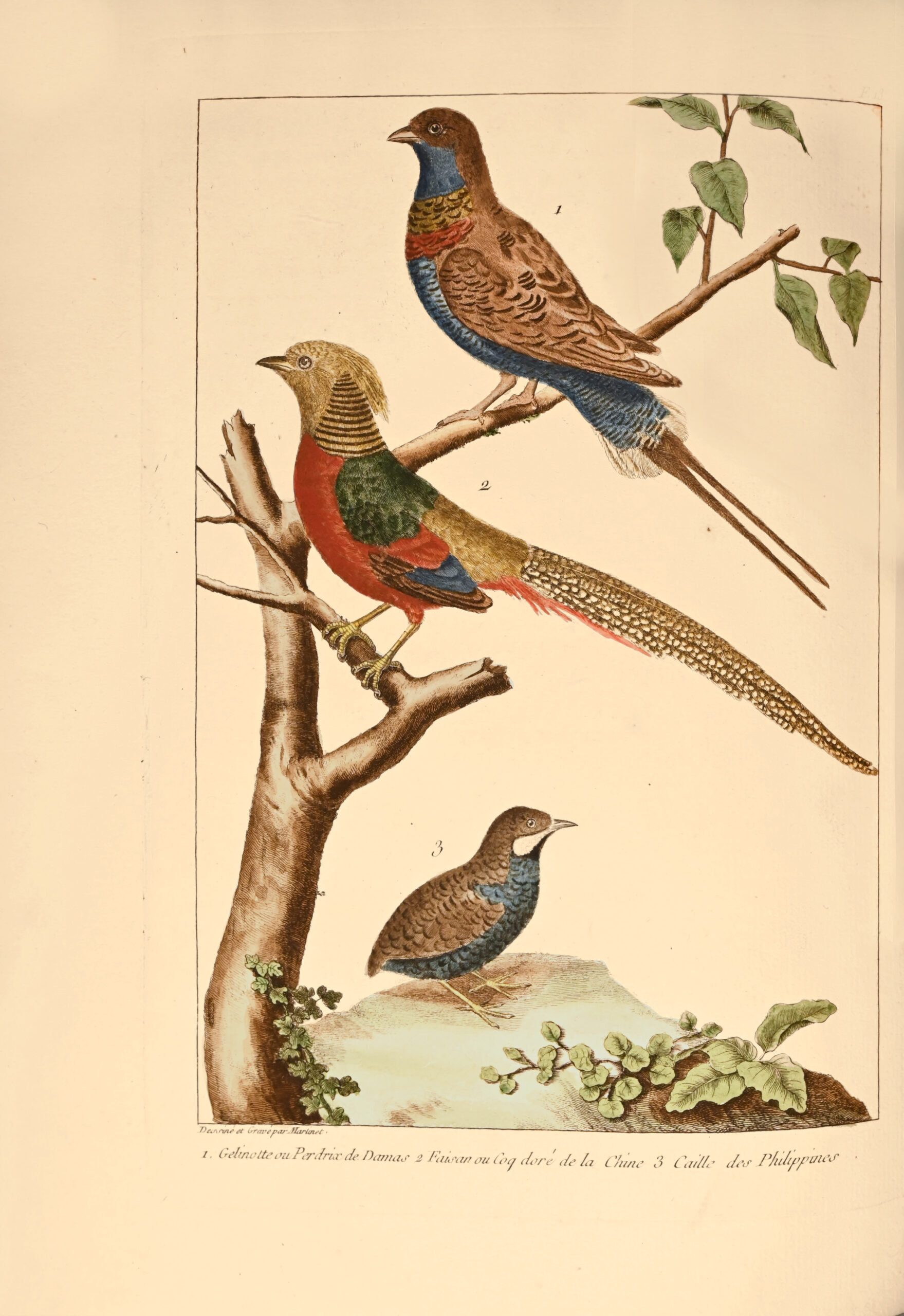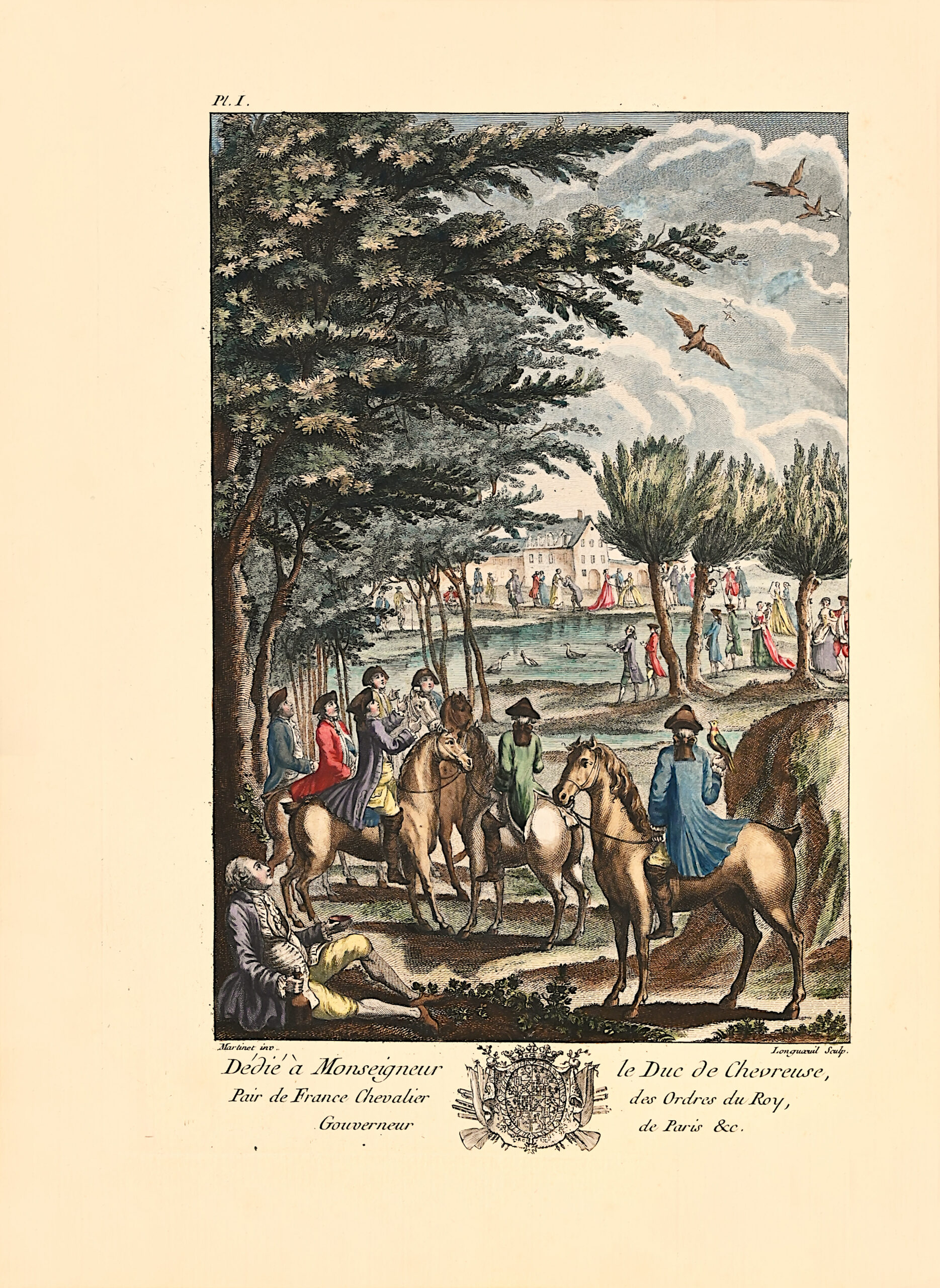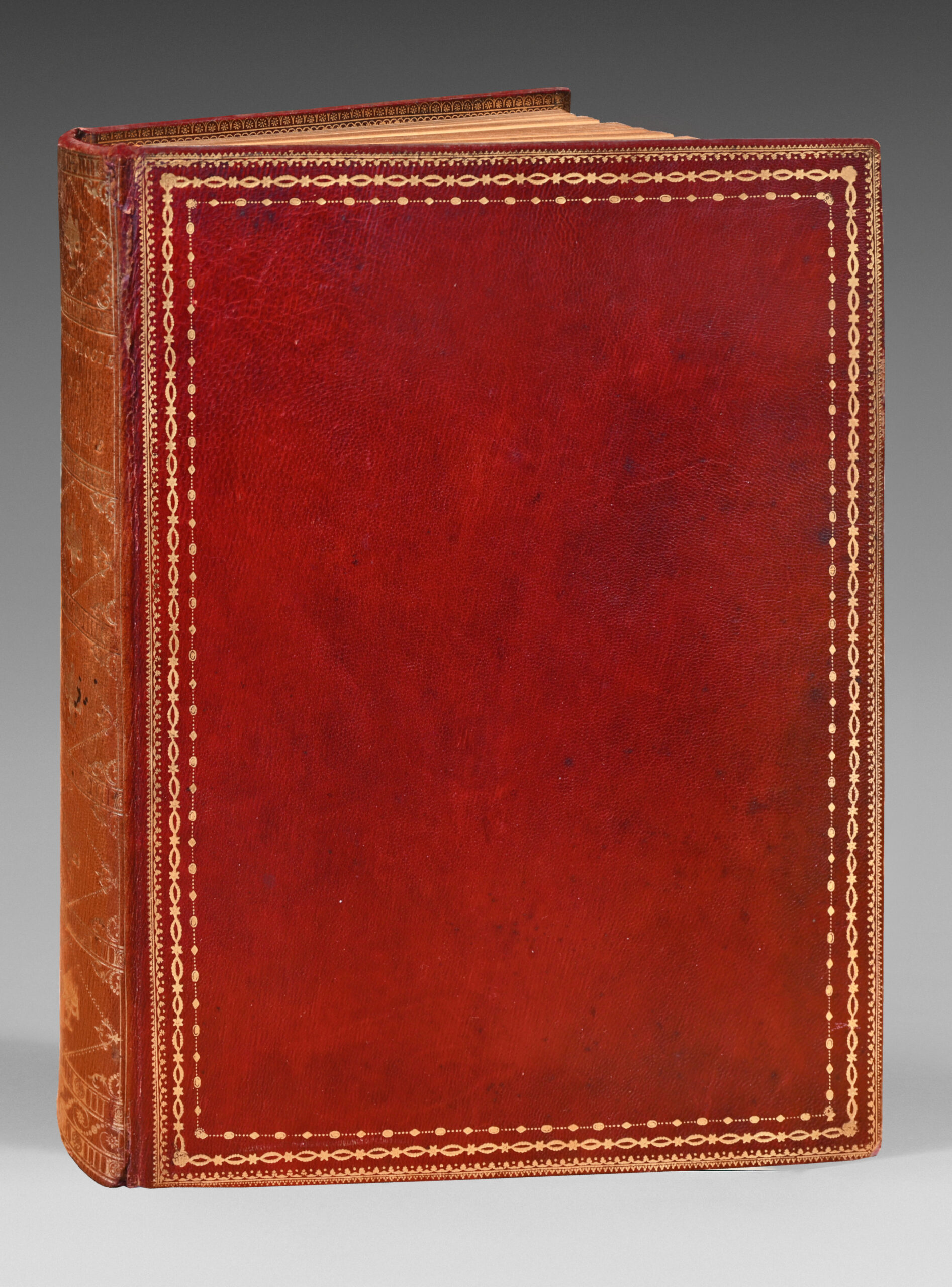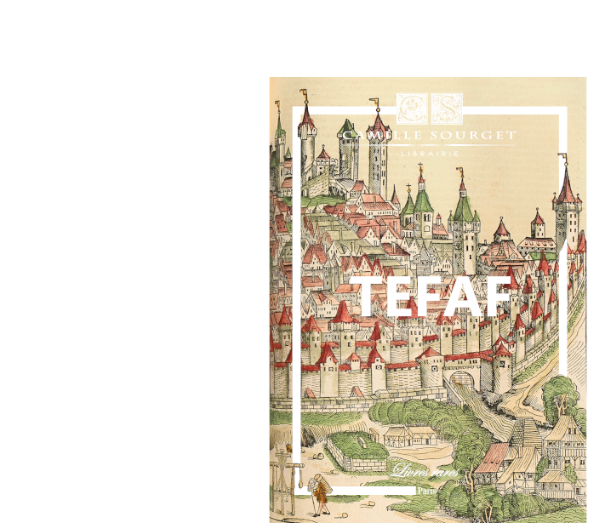Paris, chez Debure père, 1767.
4to, xii pp. (half-title, title in red and black, epistle to the Duc de Chevreuse, foreword), (2) ll. (privilege and errata), 464 pp., 31 numbered bird plates, drawn and engraved by Martinet, except the first one (frontispiece), which is engraved by de Longueil. This bêutiful frontispiece depicts a hunting scene.
Red morocco, gilt serrated borders around the covers, flat spine decorated, gilt edges. Ant. Lemonnier, Master Binder at the time, spine slightly faded.
295 x 223 mm.
Unique edition of this work by the physician François Salerne.
According to Quérard, it was published by Antoine-Joseph Dezallier d’Argenville.
Cottrell 16l ; Keynes Ray 106 ; Thiébaud, 823 (« Les exemplaires en grand papier ont les planches coloriées : ils se rencontrent habituellement habillés de maroquin, mais deviennent de plus en plus rares ») ; Harting, 176 (“chiefly noticêble for the engraved frontispiece by Martinet, in which the sport of hawking, and fishing with trained cormorants, are fairly represented“) ; Anker, 414 ; Fine Birds Books, p. 133 ; Nissen, IVB, 757 ; Ronsil, 2683.
John Ray (1628-1705), English naturalist, was destined for a religious career, which he abandoned in 1662 to devote himself to the natural sciences. A close friend of Willoughby, he published a number of works in memory of his friend, who died in 1672, based on the zoological collections left by the decêsed, while continuing his own work. In his various works, Ray introduced important innovations into natural history. He defined the notion of species, clarified the idê of groups in classification, and used anatomy to establish zoological nomenclature.
The present work, compiled by the French physician and naturalist François Salerne (1706-1760) and published after his dêth, is an adaptation of the ornithological part of the Synopsis methodia avium et piscium, a posthumous trêtise by the grêt English naturalist John Ray (1627-1705), one of the founders of modern ornithology.
Salerne considerably expanded John Ray’s text, based on his own observations approved by Réaumur, with whom he maintained a close correspondence, and the writings of êrlier authors such as Belon, Aldrovandi, Willughby, Gessner and Linné.
This classification foreshadows Linné’s later work.
François Salerne commissioned Martinet to illustrate his book, here in its first issue.
The illustration consists of 31 copper-engraved plates, including a frontispiece engraved by Longueil after Martinet, “very bêutiful” (Thiébaud), in homage to the dedicatee, the Duc de Chevreuse, who is shown hunting with falcons on his lands. The 30 bird plates (two with three subjects) were drawn and engraved by Martinet.
A precious copy, one of the few in which all the plates were engraved on very large paper and hand-colored at the time by Jacques de Favanne (1716-1770), Guillaume’s brother, draftsman and history painter.
